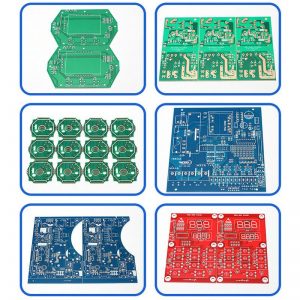In the dynamic world of electronics, one trend has steadily persisted and revolutionized the industry – miniaturization as the cornerstone of electronics. Circuit board manufacturing has been significantly shaped by this trend, altering the end products and the processes and techniques behind their creation. This article delves into the fascinating domain of circuit board manufacturing in the era of miniaturization.

The History and Evolution of Miniaturization
The drive towards smaller, faster, and more efficient electronic devices has been a powerful force in the history of technology. From the invention of the first transistor in 1947 to the integrated circuit’s introduction in 1958, the pursuit of miniaturization has been relentless. This downsizing trajectory has profoundly influenced circuit board manufacturing, transforming its physical parameters and internal architecture.
The Impact of Miniaturization on Circuit Board Manufacturing
The shrinking size of electronic devices has invariably affected circuit board manufacturing, leading to significant shifts in manufacturing processes and material requirements.
Firstly, precision and accuracy become increasingly critical as the components get smaller. This necessitates advanced equipment and methods to accurately place these minuscule components. Additionally, handling and controlling smaller materials and components requires more complex automation and control systems.
Material requirements have also evolved. Miniaturization has led to an increased emphasis on materials with higher thermal conductivity to dissipate the heat generated by closely packed components efficiently.
The Role of Advanced Technologies in Miniaturization
Emerging technologies have played a pivotal role in advancing miniaturization. For instance, nanotechnology has enabled the production of nanoparticles and nanodevices, leading to smaller, faster, and more energy-efficient components.
Micro-electro-mechanical systems (MEMS), another transformative technology, have facilitated the development of tiny mechanical devices integrated into electronics. These technologies have greatly influenced circuit board manufacturing, creating smaller, denser, and more powerful boards.
Benefits of Miniaturization in Circuit Board Manufacturing
The move towards smaller circuit boards has several advantages. It allows for enhanced performance as the decreased size of components reduces the distance signals need to travel, increasing speed. The miniaturization trend also increases efficiency as smaller devices consume less power.
Moreover, smaller circuit boards allow for more complex and functional devices. As circuit boards shrink, more can be packed into a machine, leading to multi-functionality within a single compact unit.
Case Study: Miniaturization in Action
An excellent example of miniaturization in action is in the smartphone industry. Modern smartphones are marvels of miniaturized electronics, boasting capabilities that would have been unimaginable a few decades ago. The circuit boards within these devices are densely packed with components, demonstrating remarkable manufacturing precision.
The Future of Miniaturization in Circuit Board Manufacturing
As we look towards the future, the relentless drive towards further miniaturization shows no signs of slowing down. The continuous research and development in materials science, nanotechnology, and MEMS suggest that we can expect even smaller and more efficient circuit boards.
However, the road ahead has challenges. As components become increasingly smaller, manufacturers must deal with issues like quantum tunneling and increased heat density. These challenges will require innovative solutions and a continuous push for technological advancement.
Deepening the Dive into Miniaturization Technologies
As we further explore the role of advanced technologies in miniaturization, we come across two prominent fields playing significant roles – nanotechnology and MEMS.
Nanotechnology, which involves manipulating matter at an atomic or molecular scale, has been a game-changer for circuit board manufacturing. Its applications in this domain range from nanoscale transistors that increase the processing power of circuit boards to nanoscale thin films that provide better insulation and reduce electrical losses.
Thanks to MEMS technology, it’s now possible to integrate mechanical elements, sensors, actuators, and electronics on a single silicon substrate using microfabrication technology. MEMS devices have found vast applications in portable electronics, contributing significantly to their miniaturization and enhanced functionality.
The Manufacturing Process in the Miniaturization Era
Miniaturization has influenced the design and functionality of circuit boards and the way they’re manufactured. Traditional methods that once dominated the industry gradually make way for new, innovative techniques more suited to dealing with the challenges posed by smaller components and denser boards.
For instance, surface mount technology (SMT) has largely replaced the through-hole technique for mounting components onto circuit boards. SMT allows for parts to be directly mounted onto the board’s surface, making it better suited for handling smaller pieces and providing higher circuit density.
Moreover, the demand for more precise and controlled manufacturing has paved the way for increased automation in circuit board manufacturing. Advanced robotic systems and machine vision technologies are now commonplace in manufacturing units, ensuring high accuracy and efficiency in component placement and soldering.
Navigating the Challenges of Miniaturization
While miniaturization brings numerous benefits, it also introduces new challenges that circuit board manufacturers must navigate.
One such challenge is the increased heat generation. Effective heat dissipation becomes a critical issue as components are packed closer together on a miniaturized circuit board. Advanced thermal management techniques and materials with higher thermal conductivity are being explored to address this issue.
Moreover, the demand for smaller components has also put pressure on material suppliers to produce parts with tighter tolerances. This demands more precise manufacturing techniques and more rigorous quality control measures.
Looking Ahead: The Future of Miniaturization
Despite these challenges, the future of miniaturization in circuit board manufacturing is promising—the continuous advancements in technology hint at the possibility of creating even smaller, more efficient circuit boards.
This will be driven by relentless innovations in related fields, such as 3D printing and additive manufacturing, which could revolutionize the way circuit boards are made. Additionally, progress in material science could yield new materials with superior properties, paving the way for the next wave of miniaturization.
Conclusion
As we move forward, the era of miniaturization continues to shape the landscape of circuit board manufacturing. It is an exciting journey of continuous learning, adaptation, and innovation. The challenges are plenty, but so are the opportunities. The ability to navigate these challenges and harness the opportunities will define the success of manufacturers in this dynamic and ever-evolving industry.













